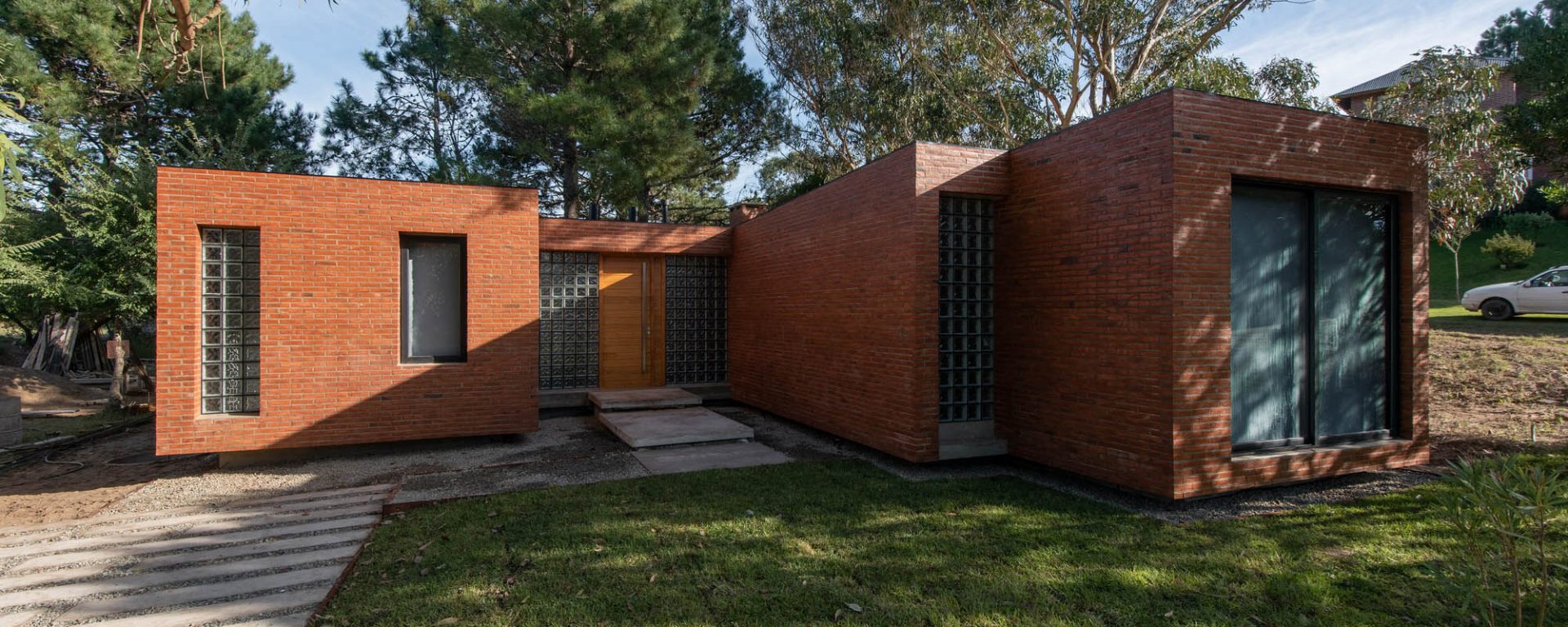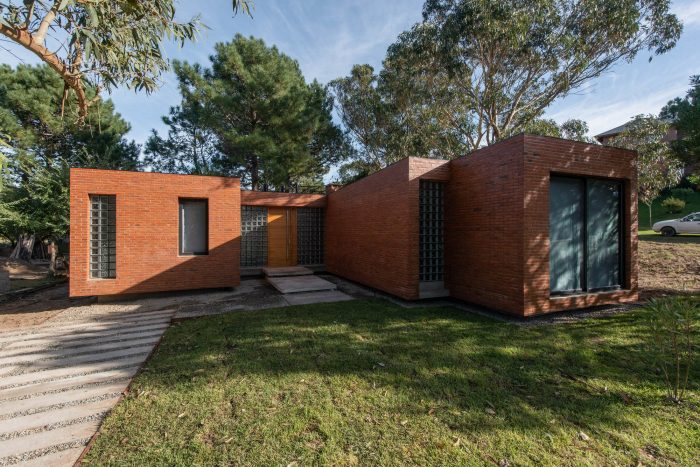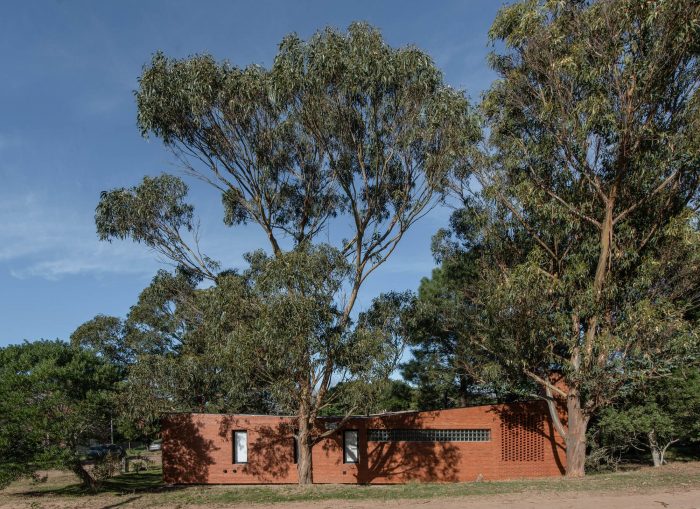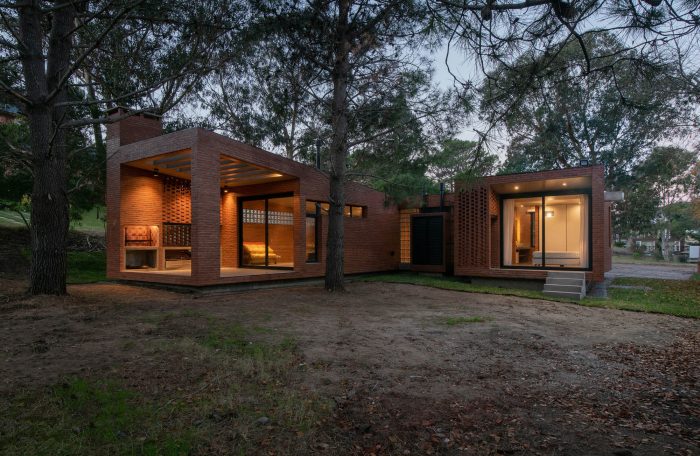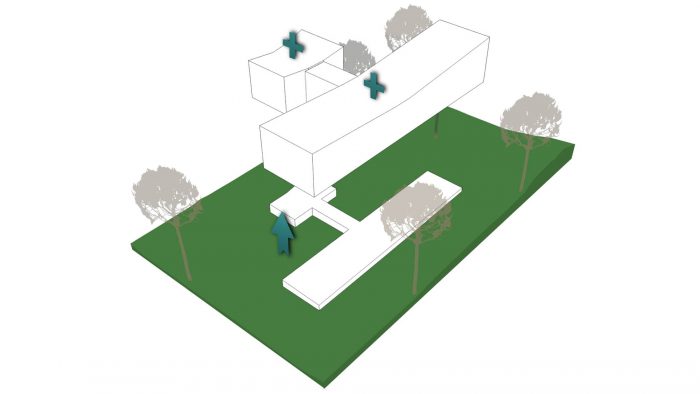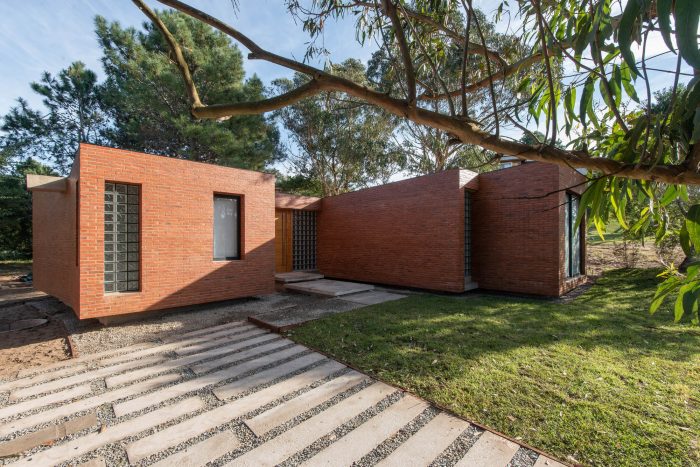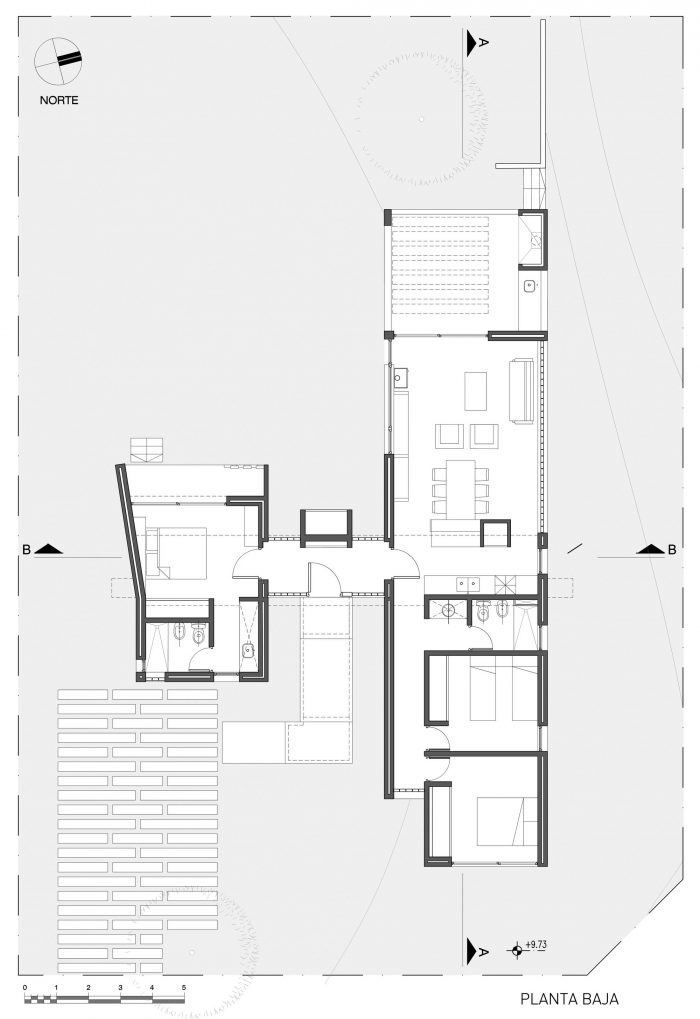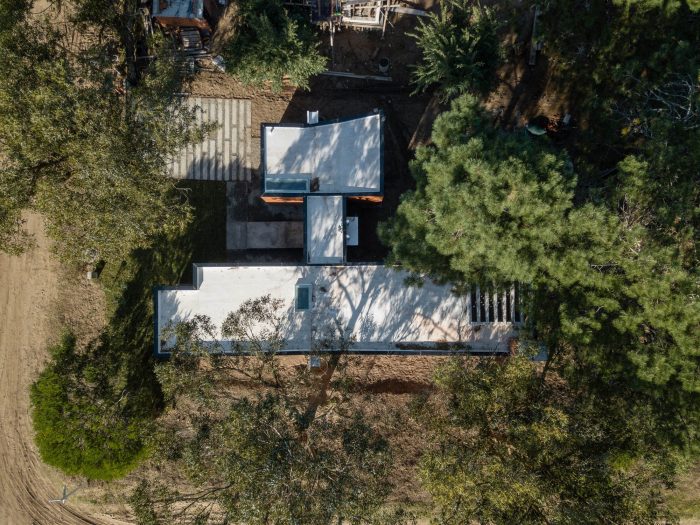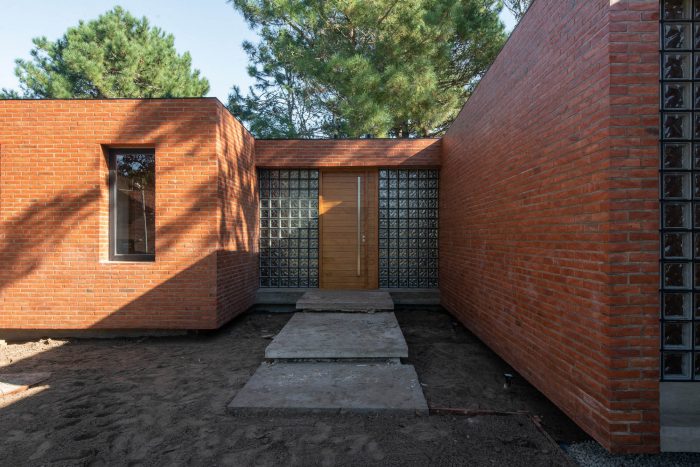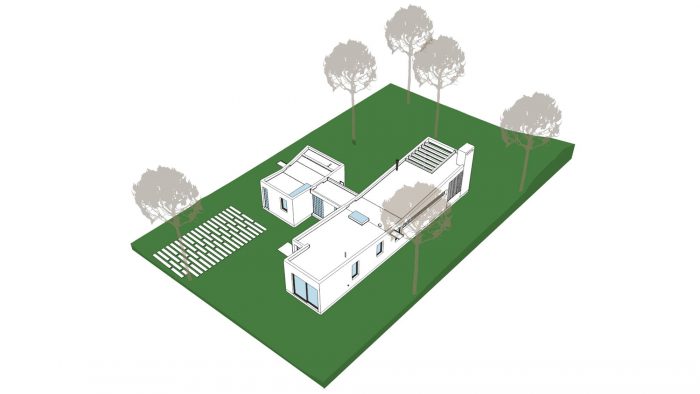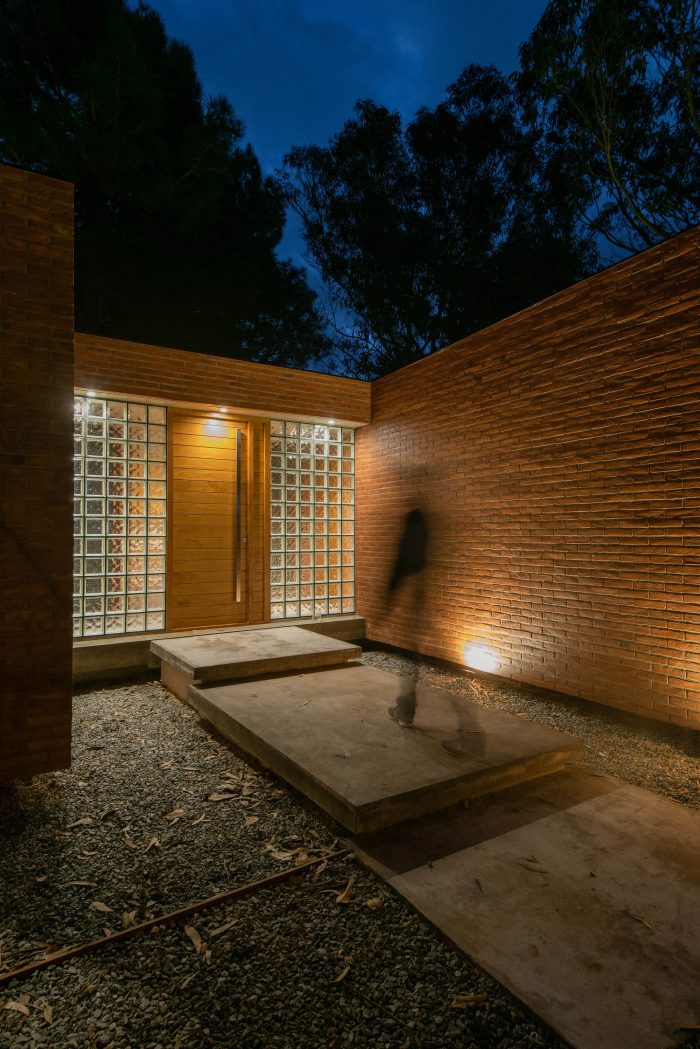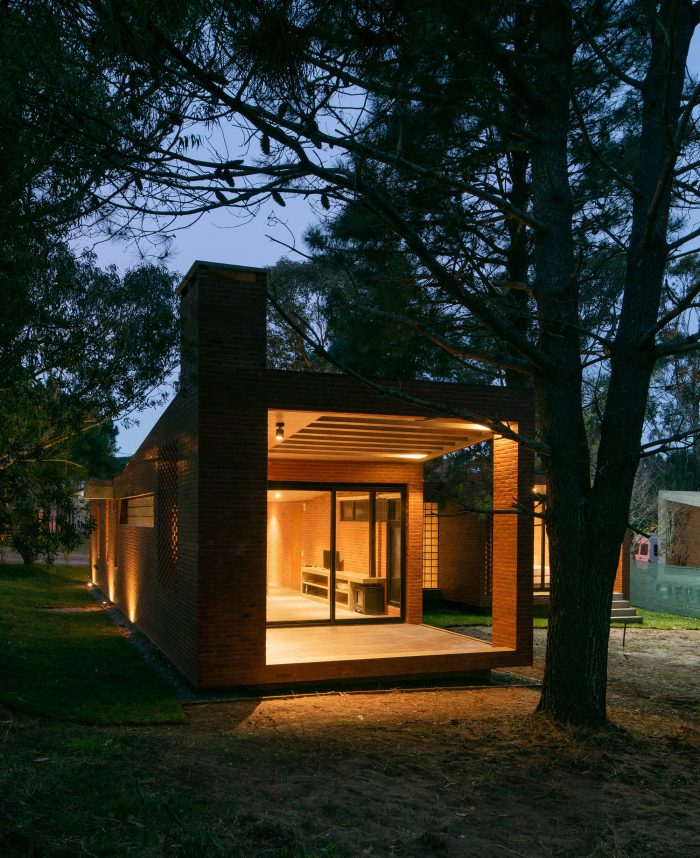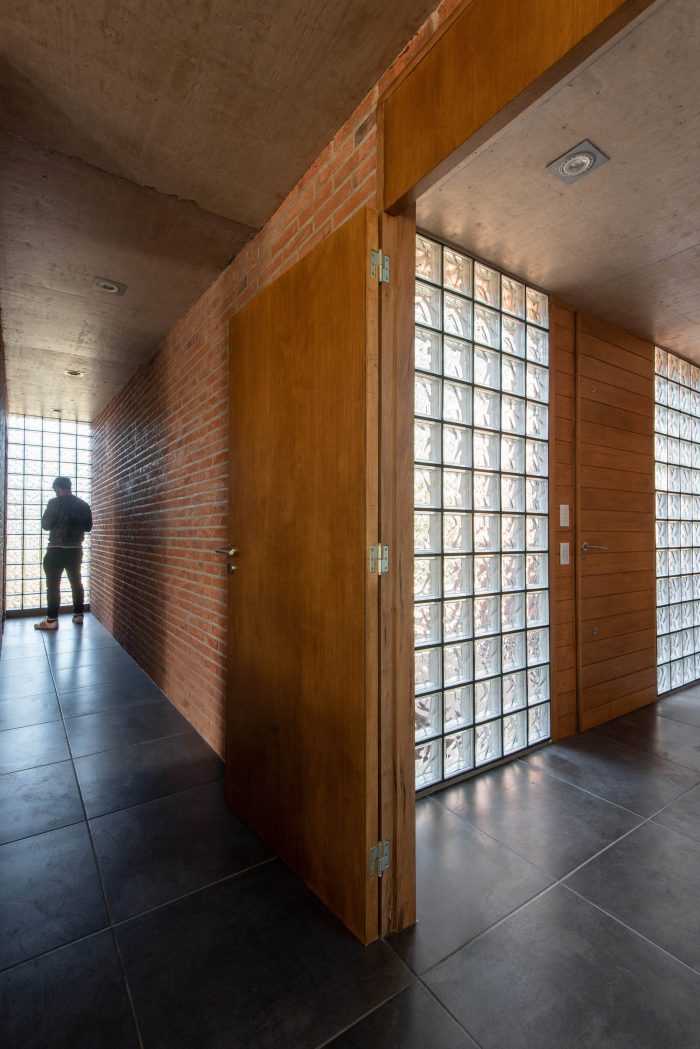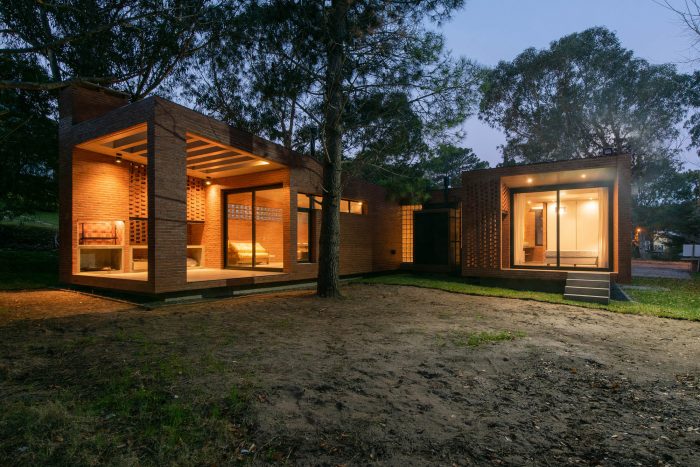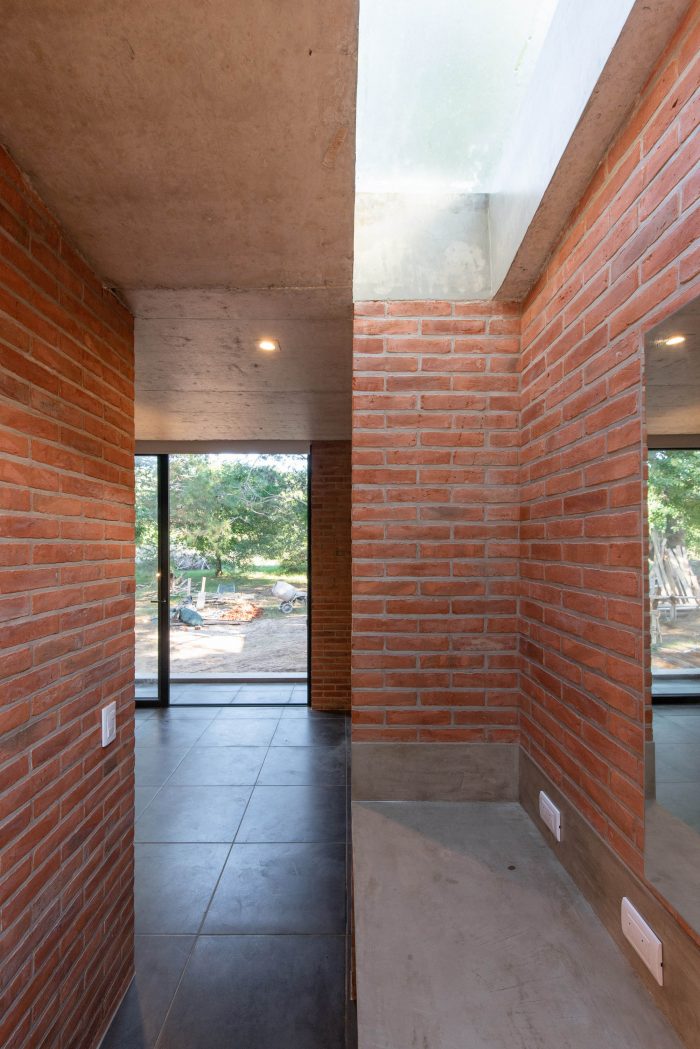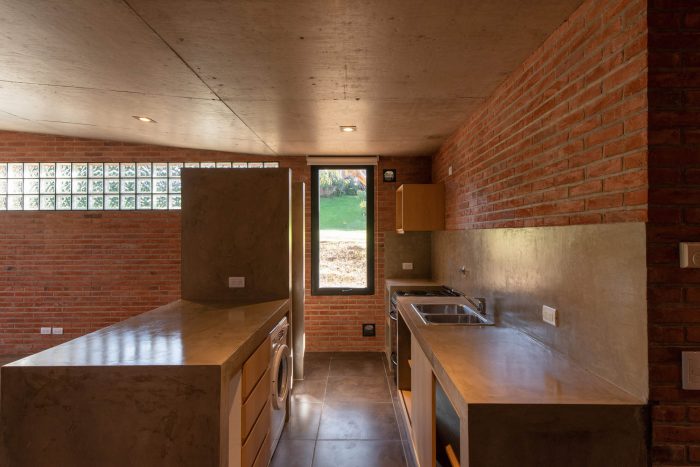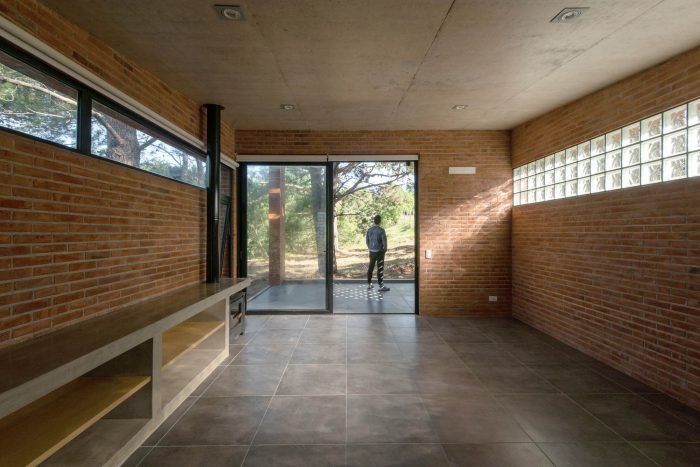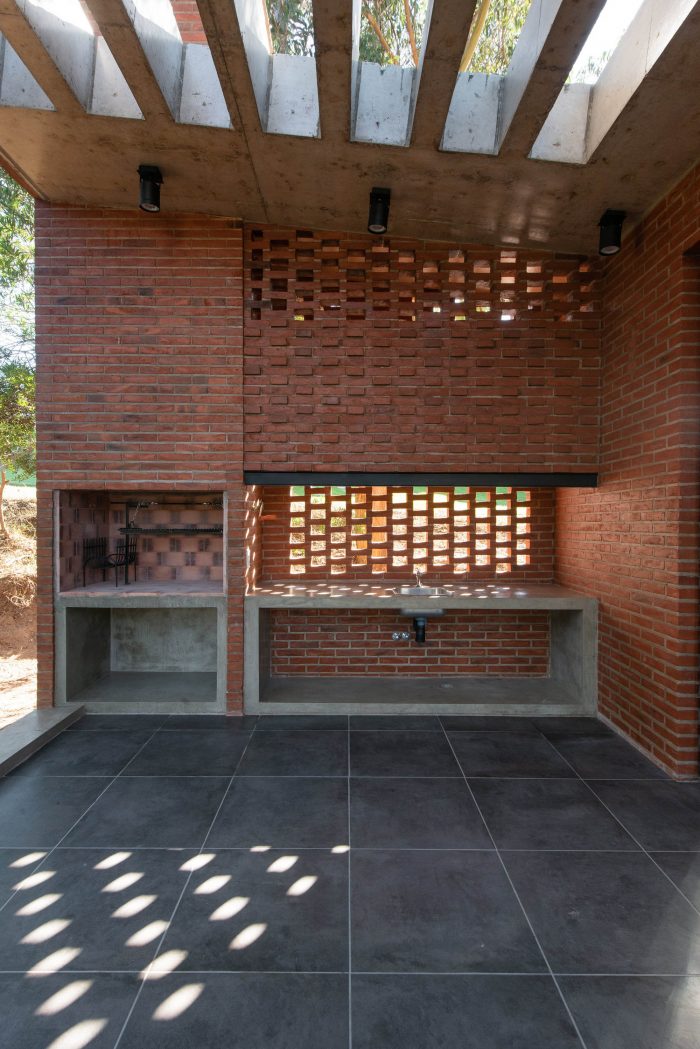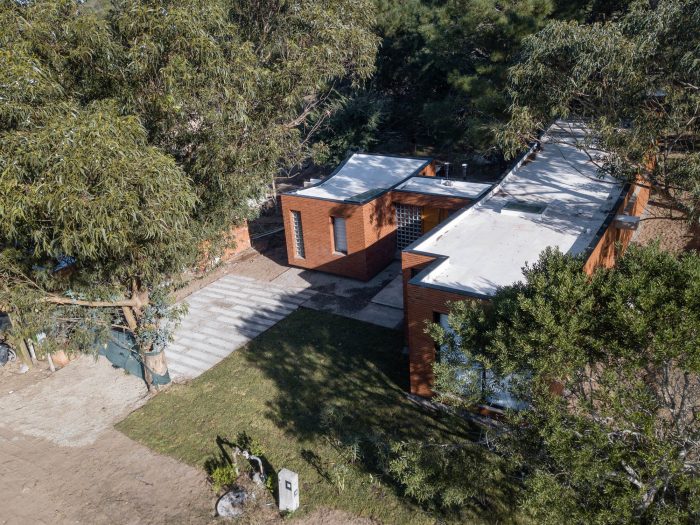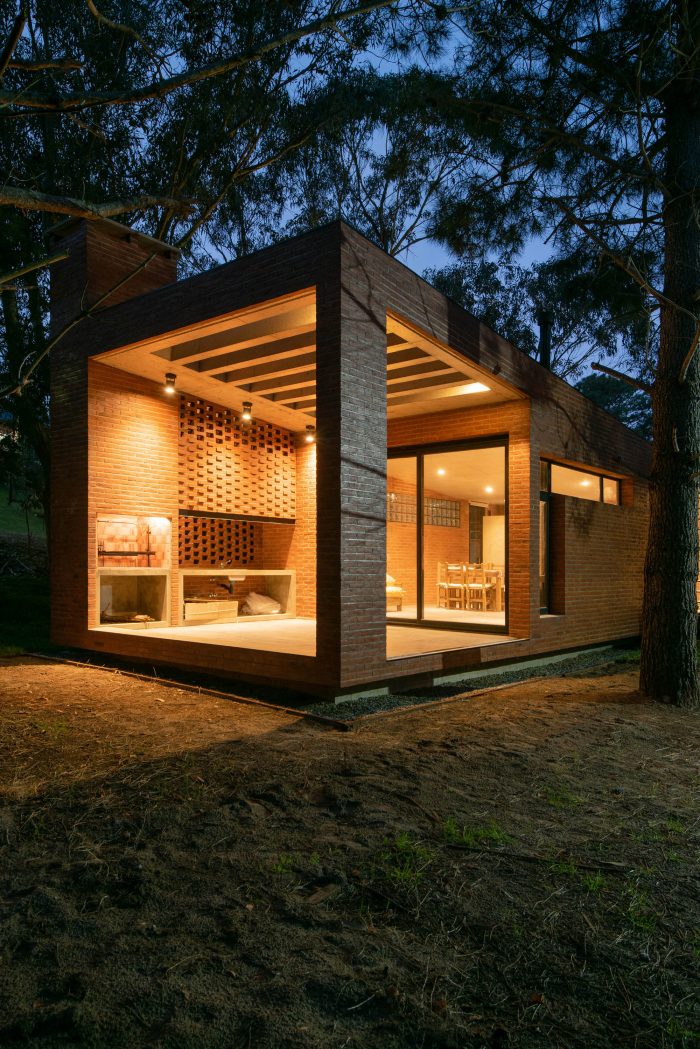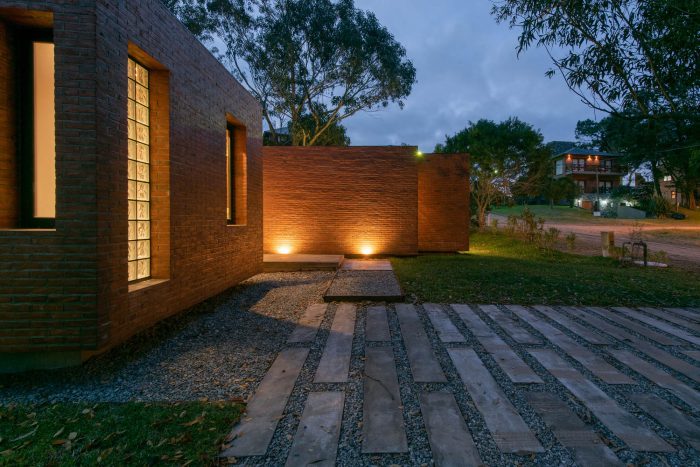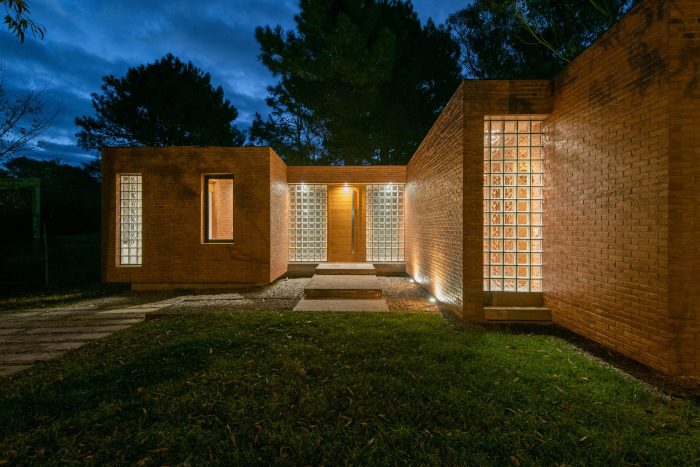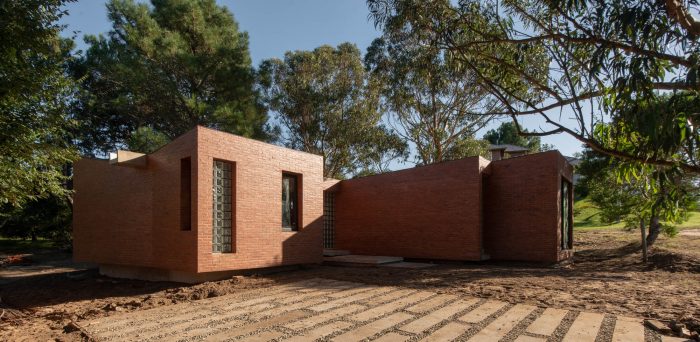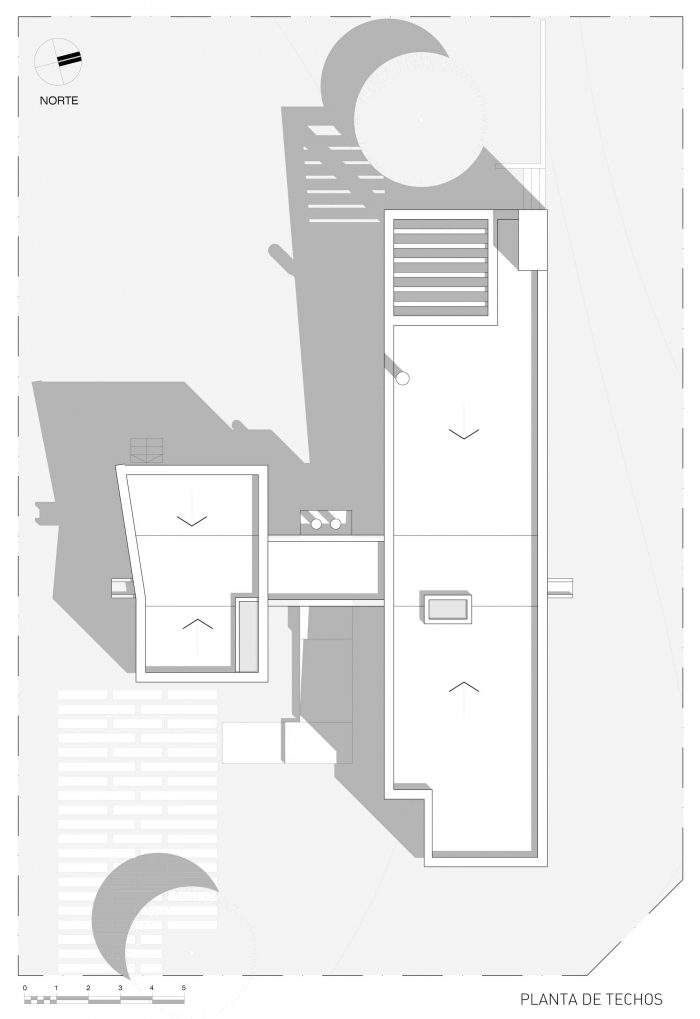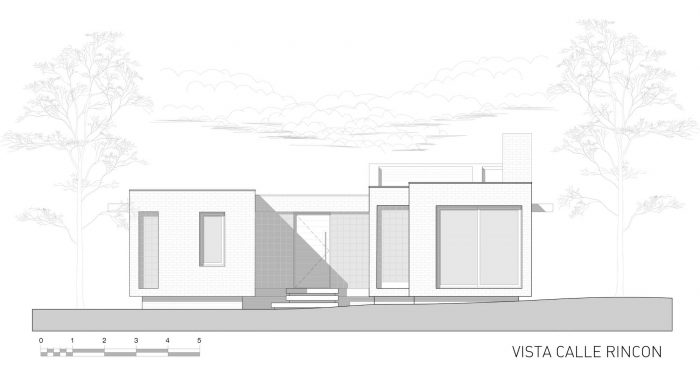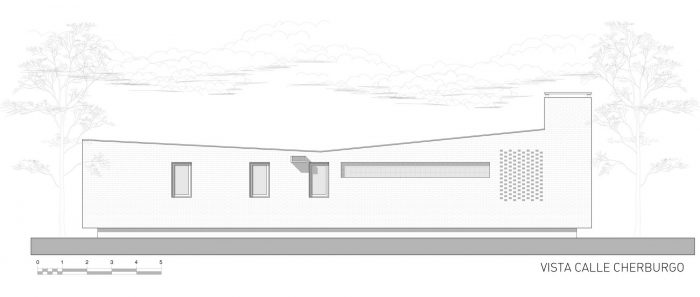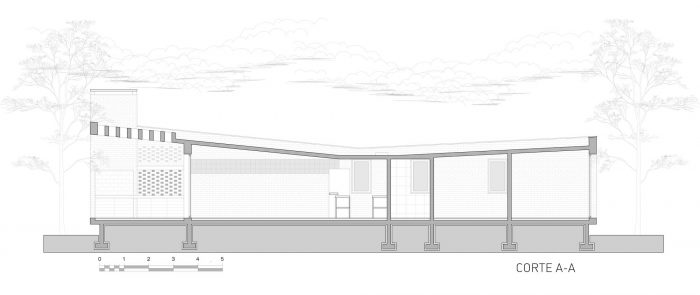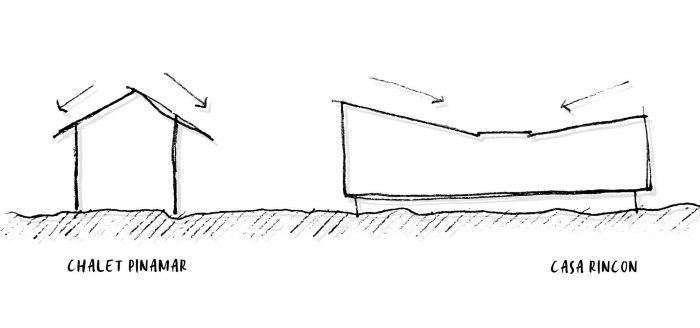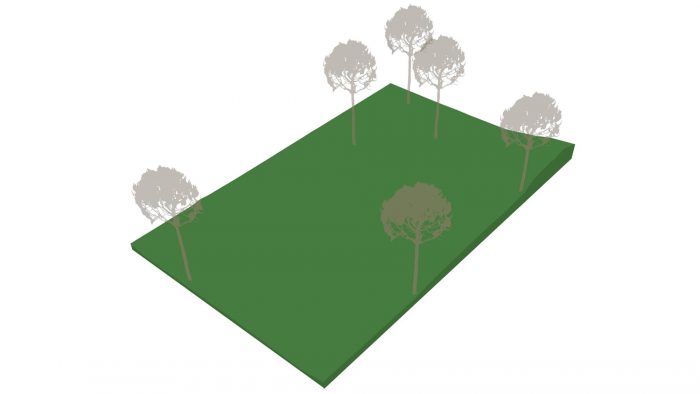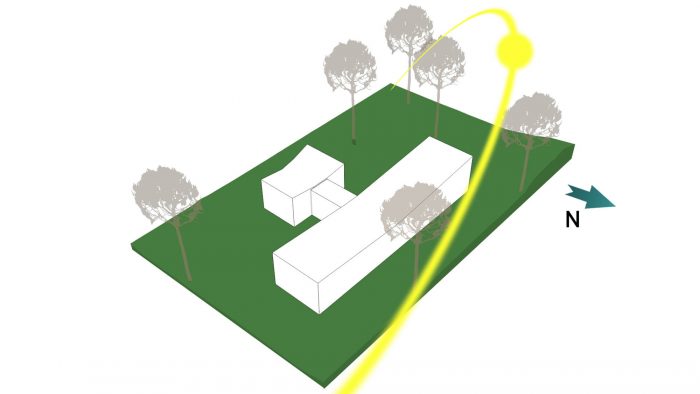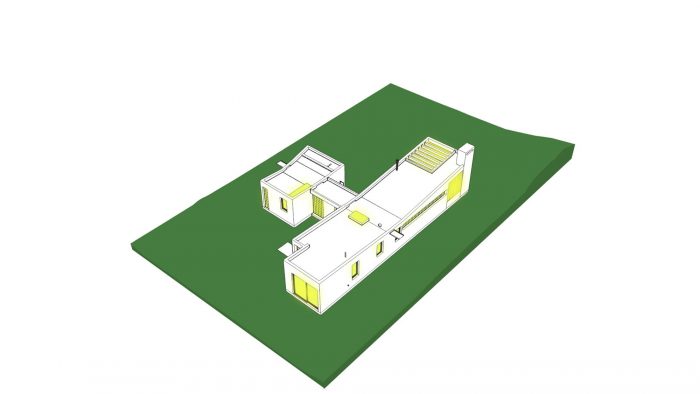整体的一部分
Rincon House是位于Ostede海滩附近的一组出租屋中的第一个,Ostede是一个历史悠久的沿海城市,曾经经历过一个辉煌的时代。
Part of a whole
Rincon House is the first of a group of rental houses located near the beaches of Ostede, a historical coastal town which used to experience a time of great splendour.
这个城市逐渐失去了它的度假城市的条件,到邻近的城市皮纳马,瓦莱里亚德尔马和Cariló。Ostende因此变成了该县最大的常住人口–主要是工人阶级–的城市。
The town gradually lost its condition of vacation cityto the neighbouring cities of Pinamar, Valeria del Mar and Cariló. Ostende thus turned into the city with the largestpermanent living population –mostly, working class- of the County.
它的地理、历史和社会特征在建筑中得到了体现,反映了当代的形式和物质的紧缩迹象。
Its geographical, historical and social featuresare portrayed in an architecture that reflects contemporaneity with signs of formal and material austerity.
主要的挑战是在一个混合的概念中,在地形不同的相邻地段设计六栋房屋,突出一个独立地段的单户住宅,而具体的概念特征则加强了整体的概念。
The main challenge was to project six houses in topographically varied adjacent lots within a hybrid concept that highlights a single-family house in an independent lot at the time that specific conceptual characteristics reinforce the idea of the whole.
典型的重新设计
房子与周围的环境形成了一种联系。现有的住宅代表了80年代和90年代中期皮纳马地区流行的砖木小屋,其特点是主体为外露的耙状连接砖,木结构和大坡屋顶。Rincon House重新定义了这种风格,并根据当前的技术调整了材料。
Typological reformulations
The house forges a bond with its surroundings. The existing residences represent the popular brick chalet of Pinamarof the ‘80s and mid ‘90s characterized by a principal body withexposed raked-jointbricks, wood millwork and big slopedroofs. Rincon House redefines this style and adjusts the materiality to current technology.
针对普通用户,该住宅将卧室面积降到最低,从而最大限度地将资源用于会议和休闲。烧烤区封闭了客厅/餐厅区域,作为室内/室外的连接点,逐步解构了建筑盒子。
Intended for a generic user, the house minimizes the bedrooms area so as to maximize the resources used in the meeting and leisure ones. The barbecue area closes the living/dining room area at the time that works as an interior/exterior nexus, deconstructing –gradually-the architectural box.
非建筑的空隙作为项目的主要空间。
房子的标志允许在两边的地段进行切割,从而在后立面创造了一个受限制的所有权空间,并对主要通道进行了限制。
The non-built void as the main space of the project
The house hallmark allows to cut the lot in portions on both sides, and thus creates a constrained space of ownership to the rear façade and a containment of the main access.
后立面的空间是项目的一个重要方面,无论是对个人住宅还是作为整体概念的一部分。这个空间包括一个由老树组成的花园–在沙丘环境中是罕见的–没有被改变,以提供一个休闲的 “自然庇护所”。房子的形式和位置封闭了两条街道的景观。
The space on the rear façade is an important aspect of the project, both to the individual residence andto its concept as part of the whole. This space consists of a garden of aged trees –rare in a sand dune environment- which was left unaltered to provide a ‘natural shelter’ for leisure. The form and location of the house closes views from the two streets.
从形式和色彩的角度看,房子是自然和人工的对比。
房子从地面升起,创造了一种感官上的动力,防止砖石接触地面时被侵蚀。
卧室的私密性需求在一个明确的提案中得到了体现:方案的分区最大限度地扩大了周边的范围,并集中在阳光和来自围墙的景观上。换句话说,一个分层的空间方案在其纵向一侧开放,并与最繁忙的街道和未来的邻居隔绝。
屋顶上的双层坡度使空间向外开放,在上午和下午最大限度地增加了阳光的进入。
The house as a contrast between nature and artificiality from a formal and chromatic stand
The house lifts off the ground creating a sensorialdynamism at the time that prevents the erosion of the masonry when it touches the ground.
The need for privacy in the bedroom turned out in an articulated proposal:a partition of the programme maximizing the perimeter and focusing on the sunlightand views from the fenestrations. In other words,a stratified volumetric scheme opened on its longitudinal side and closed to the busiest street and future neighbours.
The double slop on the roofs opens the space to the exterior, maximizing the entry of sunlight during the morning and afternoon.
经过不同的测试,我们选择了这种材料,有几个原因。首先,它的整体外观创造了一种形式上的简洁,具有极高的视觉价值。此外,当地的手工艺人在砖瓦行业中占主导地位,这也是选择普通砖作为建筑的主要材料的原因。由普通砖制成的双承重墙与气室,解决了项目当时的保温、防水和结构需求,将维护成本降至最低。
不同的砖块粘结类型创造了光影游戏,隐藏了服务元素–如空调冷凝器–并解决了边界、孔隙和浮雕的差异,同时又不失其形式上的色泽均匀性。
The materiality was selected -after varioustestings- for several reasons. First, its monolithic appearance creates a formal simplicity of great visual value. Furthermore, the fact that local craftsmendominate the masonrytradecontributed to the choice of common bricks as the main material in the construction. A double bearing wall made of common brick with air chamber solves the thermal, waterproofing and structural needs of the project at the time that reduces the cost of maintenance to the minimum.
The different brick bond types create games of lights and shadows, hideservice elements –such as air conditioning condensers- and resolvedifferences in boundaries, porosities and reliefs without losing its formal chromatic homogeneity.
建筑师:Estudio Galera
年份:2018年
摄影:Diego Medina
制造商:Cermat、Anaya Metalurgia、El Holandés、MasterGAS、Pasalto、Plastigas
结构工程师:Javier Mendía
測量師:Claudio D eramo
景观设计:Pasesaggio
Constractor:Leandro Condori
电力:Gabriel Jaimon
卫生:Christian Carrizo
管道和金属板:Rubén Calvo
定制金属加工:Juan Rascione
地段面积 : 6668.24平方英尺
建筑面积:1237.85平方英尺
负责建筑师:Ariel Galera, Cesar Amarante, Francisco Villamil
城市 : Ostende
国家:阿根廷
Architects: Estudio Galera
Year: 2018
Photographs: Diego Medina
Manufacturers: Cermat, Anaya Metalurgia, El Holandés, MasterGAS, Pasalto, Plastigas
Structural Engineer:Javier Mendía
Surveyor:Claudio D eramo
Landscaping:Pasesaggio
Constractor:Leandro Condori
Electricity:Gabriel Jaimon
Sanitation:Christian Carrizo
Ducts And Sheet Metal:Rubén Calvo
Custom Metal Working:Juan Rascione
Lot Area:6668.24 ft2
Building Area:1237.85 ft2
Architects In Charge:Ariel Galera, Cesar Amarante, Francisco Villamil
City:Ostende
Country:Argentina

